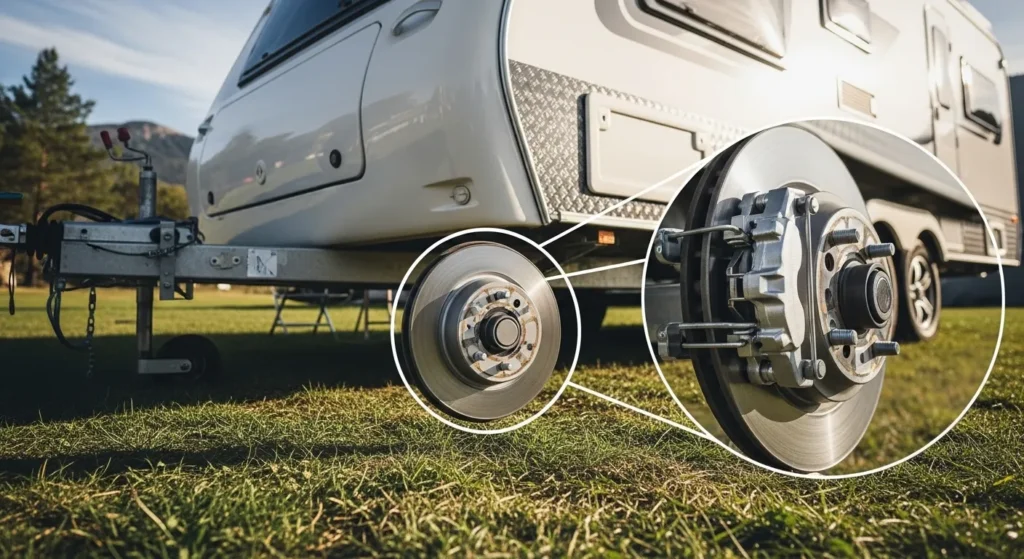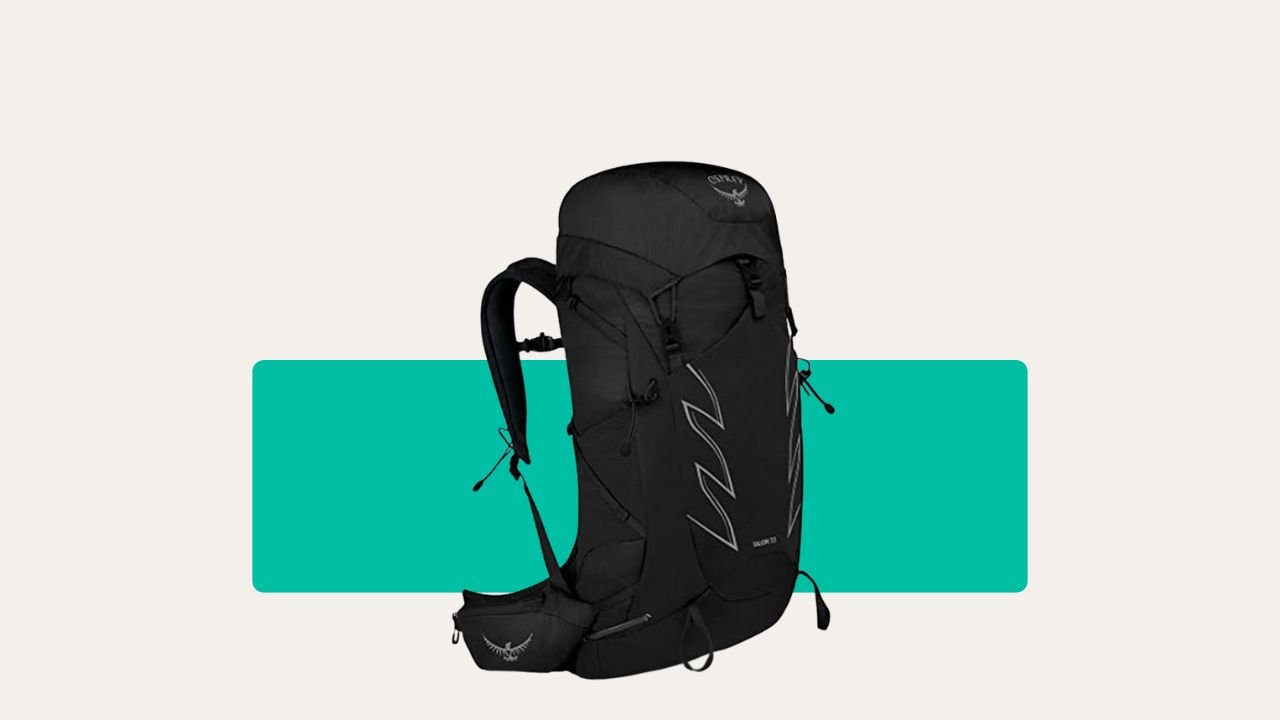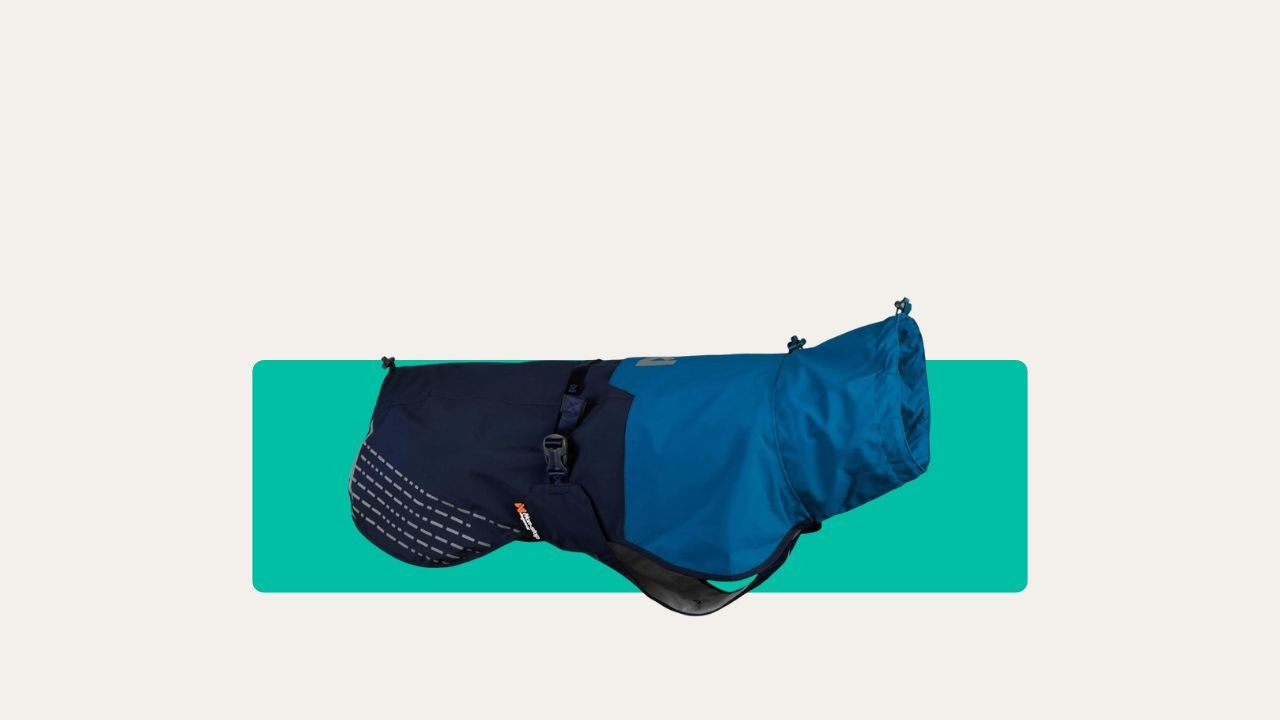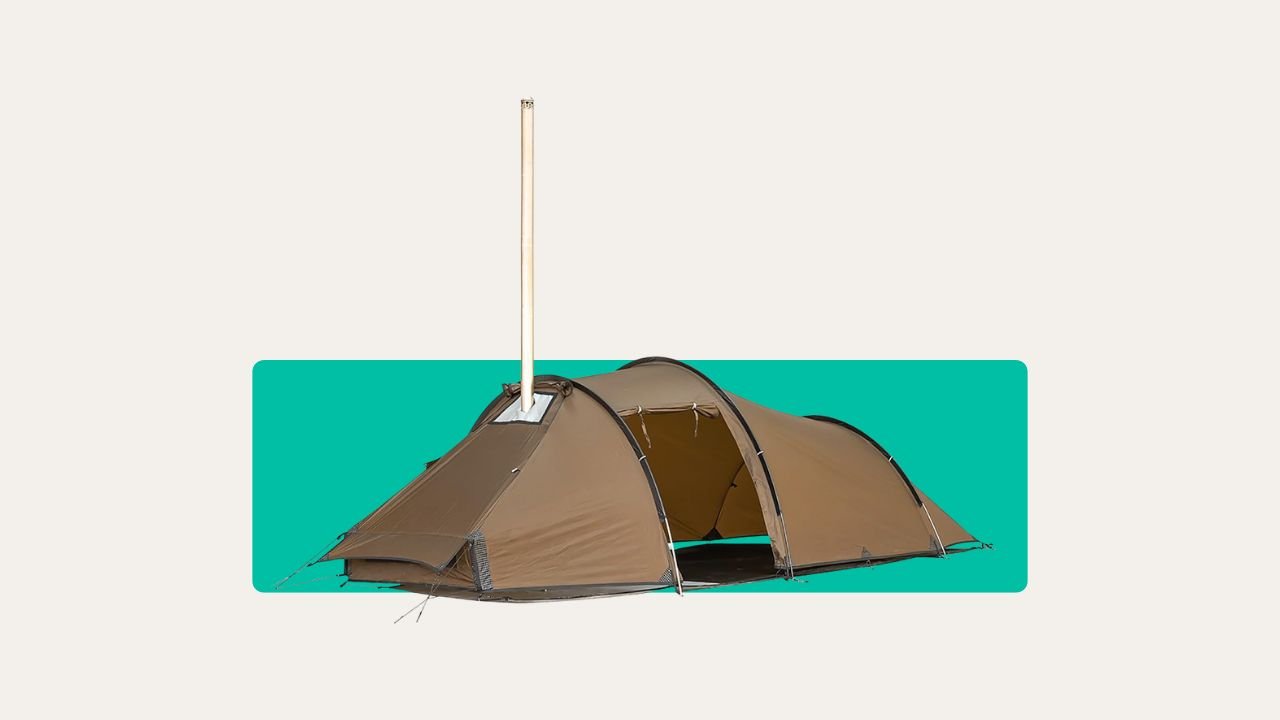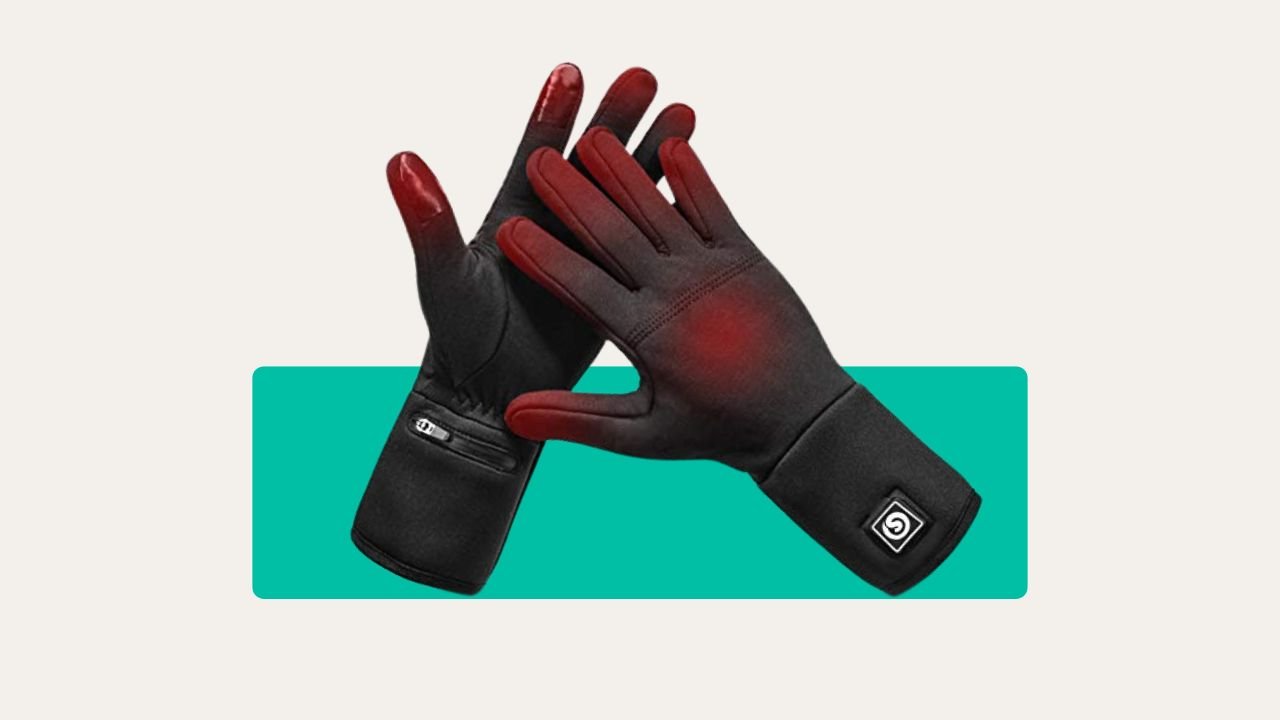Brakes might not be the most exciting part of caravan life, but they’re one of the most important. Knowing how your caravan’s braking system works can make the difference between a smooth stop and a dangerous one. It’s all about staying safe and in control on the road.
If you’re new to towing, all the talk of over-run brakes, breakaway cables, and handbrakes can sound a bit confusing. But don’t worry – I’ll break it all down in simple terms. In this guide, I’ll walk you through how caravan brakes work, how to check them, and why the handbrake isn’t just for parking on hills.
Why Caravan Brakes Matter?
Let’s clear something up: your car’s brakes aren’t enough when you’ve got a caravan on the hook. The extra weight pushes your stopping distance way up. Wet roads, greasy leaves – suddenly you’re not in control. Proper caravan brakes keep your outfit safe, legal, and – frankly – alive when a tractor pulls out in front of you.
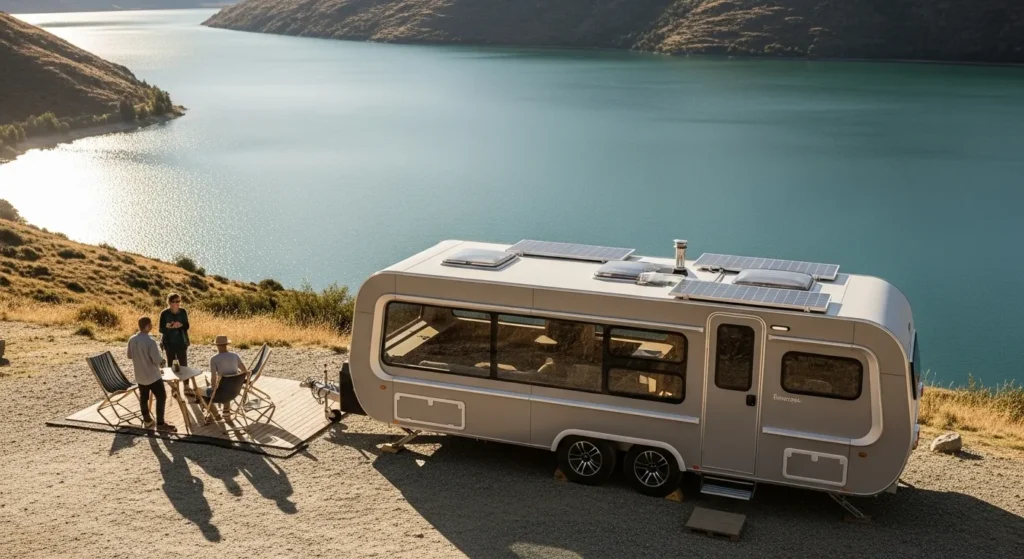
One stormy night on the North Devon coast, my van’s brakes – serviced three days before – meant I didn’t end up in a ditch. That moment made me a stickler for brake checks. Ask any seasoned camper, and they will tell you that when you ignore the brakes, you’ll regret it sooner or later.
Main Types of Caravan Brakes
So, do caravans have brakes? Absolutely – and there’s more than one kind. Here’s what you’ll spot in the wild:
Electric Brakes
You mainly find these on heavier UK caravans and big trailers. A brake controller in your car sends juice down the wire to the caravan’s brakes. Push your foot on the pedal, the electrics kick in, and the caravan slows with you. Easy, reliable, especially for bigger loads if you wire everything right.
Hydraulic/Surge Brakes
These pop up on mid-weight vans, particularly boat trailers. No electrics. When you brake, the van’s momentum pushes on the hitch, compressing a cylinder. That pressure works the brakes. Simple – you don’t need fancy kit in your car, but not as precise as electrics.
Mechanical Override Brakes
These are proper basics, usually for light caravans. The hitch moves when you brake, yanking a cable. That cable pulls the brakes. It’s simple, but doesn’t offer much control. You’ll find loads of old small vans with these, and they’re legal under certain weights.
Disc and Drum Brakes Explained
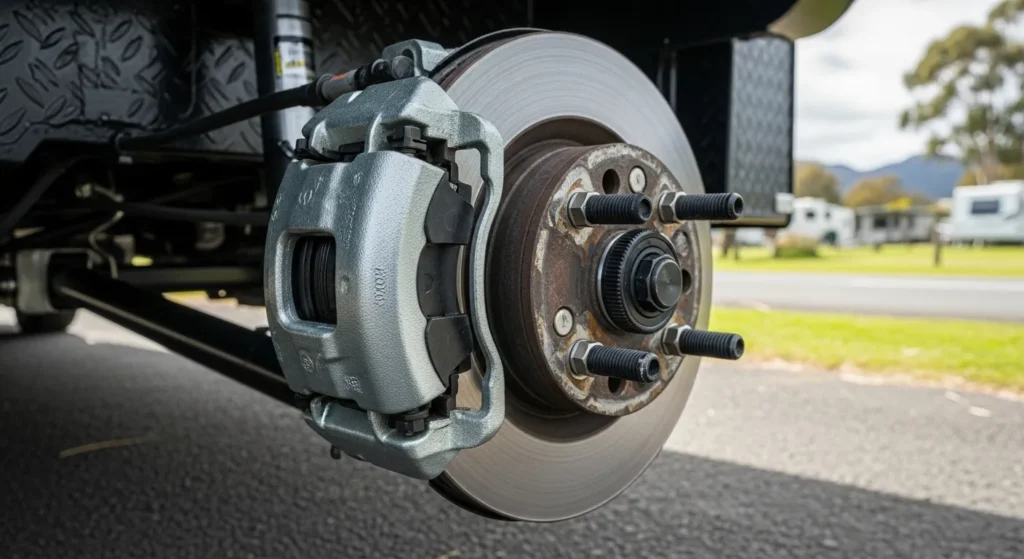
You’ll hear a lot of talk about disc brakes and drum brakes when it comes to caravans. Don’t worry – they’re easier to understand than they sound.
Drum Brakes
These are the old-school type, but still really common on caravans. Inside each wheel, there’s a spinning drum. When you brake, two little brake shoes push outwards and press against the drum to slow you down. They’re tough, simple, and handle dirt well, which is handy when you’re camping in soggy, muddy fields. They do wear out over time, but they’re reliable.
Disc Brakes
More modern and powerful. Here, a metal disc spins with your wheel. When you hit the brakes, pads clamp onto the disc to slow things down. They give you stronger stopping power, especially in the rain or on steep hills. However, they’re more expensive and can be a bit fussier if you’re out in all weathers.
In my experience, drum brakes handle muck and grit better – I’ve seen them keep working just fine after two weeks on a sticky, clay-soaked pitch. But if you’re planning on towing through big hills or mountain routes, disc brakes will give you better control on the descents.
How Caravan Handbrakes Work?
Here’s a killer myth: the handbrake is just there for parking. Wrong. The caravan’s handbrake (also called the parking brake) is a load-bearing hero, not a bit of showy hardware.
You’ll find it at the pointy end (the A-frame) of most caravans. It’s just a lever connected to the brake system by rods or a cable. Pull it up, and it locks the wheels, stopping the van rolling off when you unhitch on a slope, or while you sleep inside on a rain-soaked night in Wales.
Key Braking Features for Campers
Don’t get bogged down in jargon. Instead, here’s what makes modern caravan brakes smarter and safer:
Proportional Braking: This means the caravan’s braking force matches what you’re doing with the car. If you stop gently, the van does too. Slam on, and it bites. Usually, electric brakes with a good controller manage this. It makes for calmer, safer stops – especially crucial if you’re towing in the wet.
Direct Braking: Here, the brake system on the caravan reacts instantly to your car’s brakes. Less lag, less chance of the van “pushing” you downhill. It’s peace of mind on tricky roads.
Been caught out by a sudden stop in a downpour on the M5? With proportionally set brakes, you stay straight and in control, not jack-knifed across the motorway.
Checking Laws and Weight Limits
Now for the dull bit (essential, though): the law says every caravan over 750kg needs working brakes in the UK. And above a certain weight – around 3500kg for combined cars and vans – you might need special towing permissions. There’s no wiggle room here.
Every caravan with brakes needs a working handbrake. If you don’t want a fine, a fail at your safety check, or worse – a runaway van – make sure you play by the laws.
Check your van’s plate for weight, then read up on DVLA and club advice before buying. Ignore this and you could invalidate your insurance or pick up points on your licence.
Maintenance Tips for a Safe Trip
Before you hitch up and hit the road – even if you’re only popping to the next village – check your brakes and handbrake. It takes five minutes and can save you hours of stress (or worse).
Here’s what to keep an eye on:
- Test the brake action and handbrake hold before every trip. Make sure the handbrake actually holds on a slope – don’t assume.
- Inspect pads, shoes, drums, and cables. Look for wear, cracks, or anything that doesn’t look quite right. If it’s dodgy, replace it. Not later – now.
- Clear out brake dust. It might not look like much, but that fine black stuff can eat through your brake linings and mess with performance.
- Running electric brakes? Check all the wiring. Moisture and dodgy connections are a recipe for failure.
- Got a brake controller? Adjust it after the van is loaded. What works fine when empty can feel way off once you’ve packed in the gear.
- Listen out. Squeals, scrapes, or dragging sounds are never good — investigate straight away.
- Clean the handbrake mechanism regularly, especially after towing in salty winter grime. That stuff causes rust quicker than you'd think.
Big Takeaways for Caravan Safety
Caravan brakes aren’t just a technical detail – they’re the difference between a good story round the fire and a disaster in the headlines. Ignore the handbrake, and you’ll only make that mistake once.
Always check the type of brakes you have – electric, hydraulic, or mechanical override. Know their strengths and quirks, especially in UK weather.
Respect the law: brakes for any van over 750kg, working handbrake, and don’t cut corners on maintenance. Test everything before a long haul, and don’t forget the breakaway cable.
After years on blustery clifftops and muddy farm fields, I’ve learned – never trust to luck with brakes. If you keep them checked, your caravan will get you there and (more importantly) home again, every time. Safe travels, and see you where the road turns into grass!

